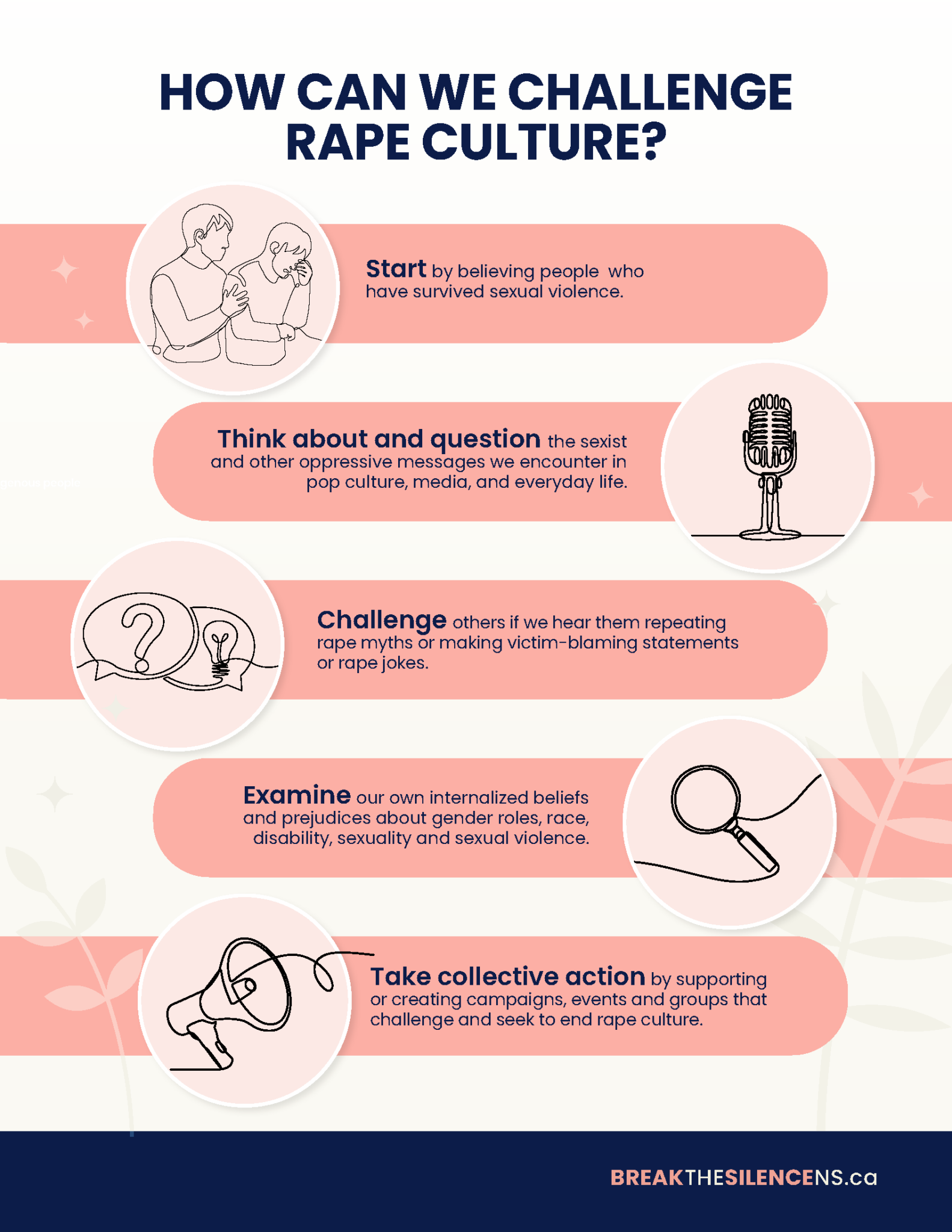"Women want to be pursued and dominated."
What is Rape Culture?
How does rape culture impact survivors of sexual violence?
Rape culture normalizes sexual violence and as a result, the victim/survivor may not understand what happened to them as sexual violence. They may think they are overreacting and refrain from talking with someone, seeking support or reporting the violence. Even if they do recognize what happened to be sexual violence, rape culture can cause them to blame themselves, feel guilty or ashamed, and feel afraid that they will not be believed, including by professionals and authorities.
For example, rape culture tells a young woman at a bar that if she flirts with someone, she owes them sex. It tells her that if she invites them back to her apartment and is assaulted, then she brought it on herself and shouldn’t complain.
These ideas play into the “good victim”, “bad victim” narrative. This false dichotomy positions the “good victim” as a woman who, for example, didn’t know the person who perpetrated the violence, was dressed modestly, was not drinking or doing drugs, was a virgin or had few past sexual partners, reported the assault to police directly after it happened, and remembered all of the details. This is an unrealistically high and unfair bar, one that is always moving.
The hypersexualization and dehumanization of racialized, Indigenous, queer/bisexual women, transgender women, and transgender people, also means that a “good victim” is usually thought of as being both white, heterosexual, and cisgender.
There is no such thing as a good or bad victim. No one asks or deserves to be violated.
Rape culture makes it challenging for victims/survivors to heal from their experiences. It creates a toxic culture where they encounter rape myths and victim blaming attitudes on a regular basis. It creates an environment where sexual violence and trauma is trivialized.
These instances can be stressful and re-traumatizing.
Reflection Activity:
What would you add to the info graphic below about challenging rape culture?
What are Rape Myths?
Many people do not feel comfortable reporting sexual violence or getting support due to the prevalence of rape myths. Rape myths are common misconceptions about sexual violence, the people who have been subjected to it, and those who perpetrate it.
These myths impact how victims/survivors are treated (and if they are believed) by police, media, the justice system, and even friends, family, and community. They can cause a victim/survivor to doubt or blame themselves or fear that they will not be believed. Rape myths are misleading, harmful, and still very present in our collective thinking.
Engage
Reveal the facts about rape myths below to increase your awareness.
